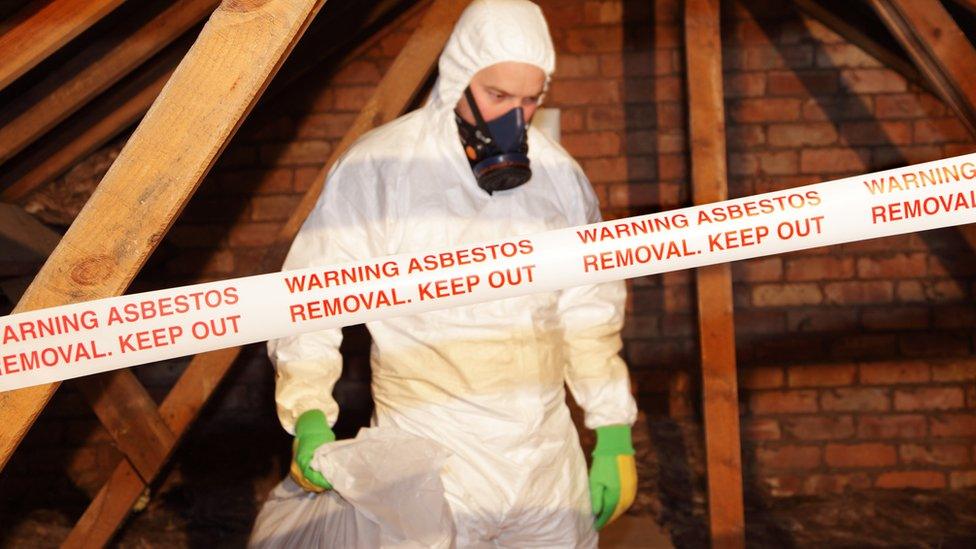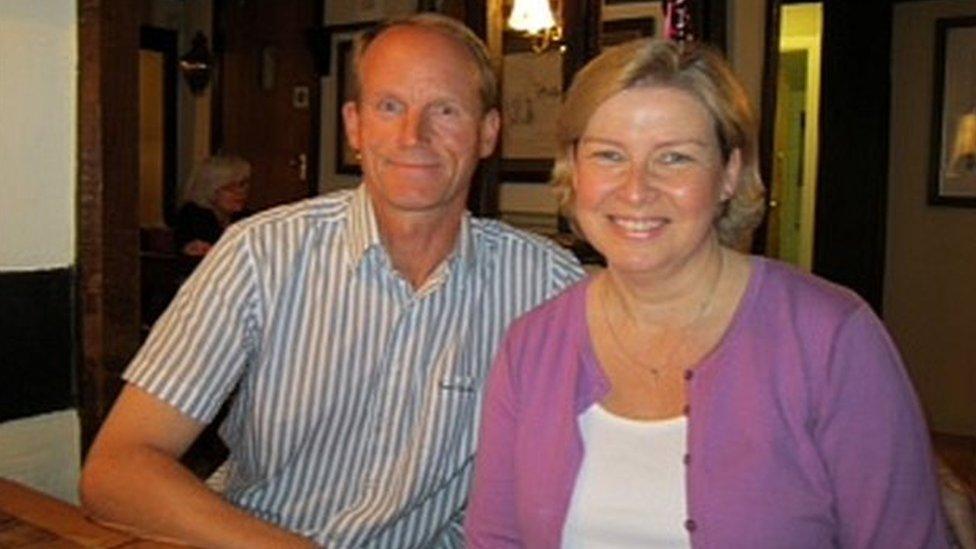Asbestos in Scotland remains a 'health time bomb'
- Published

Asbestos was once widely used in the construction of public buildings
The use of asbestos in Scottish schools has created a health "time bomb", medical and legal experts have claimed.
An increasing number of people are coming forward with asbestos-related conditions they claim are associated with working in affected buildings.
Exposure to asbestos dust can cause a deadly cancer called mesothelioma.
Scotland currently has the highest global incidence of the condition, with 175 cases diagnosed in 2014, according to the University of Glasgow.
Laura Blane, a partner with Thompsons Solicitors, said the firm was dealing with about 200 cases of people who have been exposed in hospitals, schools, leisure centres, council headquarters and other public buildings.
She said: "It is no exaggeration to say that this is an enormous ticking time bomb and I am seeing increasing numbers of cases.
"We all know that our local councillors have busy in-trays but I would say to them that this is now something that touches every community in the country. It's a problem that must be tackled with the upmost urgency."
Victims of asbestos and their families have called on all parties in the upcoming council elections to acknowledge what they say is "one of the biggest health scandals facing Scotland".

Iain Naylor believes his late wife Sandra was exposed to asbestos while she was at school
Iain Naylor's wife, Sandra, developed mesothelioma which she believed was due to exposure to asbestos dust when she was a pupil at Caldervale High School in Airdrie in the 1970s.
She died in 2014 at the age of 52.
Mr Naylor is now leading calls for all prospective councillors to make the issue a priority.
He said: "We were so upset at the diagnosis because we couldn't understand how she was exposed. Sandra didn't work in heavy industries or anything like that.
"I lost my wife because she was a pupil in a school full of asbestos. How could that happen? How many others have been affected?"
'Unacceptable risk'
Robin Howie, a consultant on asbestos, said hundreds of public buildings could have "significant asbestos content".
"Routine maintenance and general dilapidation of those buildings causes a release of asbestos fibres into the air," he said.
"Unless stringent asbestos fibre limits of less than 100 fibres per cubic meter are introduced and enforced in our schools and public buildings then our children will continue to be exposed to an unacceptable level of risk. The threat cannot be overstated."
The current HSE approved level of asbestos fibre is 10,000 fibres per cubic metre.
Annette Smith, of Scotland's biggest asbestos charity Clydeside Action on Asbestos, backed Mr Naylor's initiative.
She added: "It's very brave of Iain to come out and comment on this. This not a party political issue but it is an issue where we really need the help of our local politicians.
"The is one of the biggest health challenges facing our country in the coming years and we can't win this fight without the backing of our councillors.
"I would say to all political parties please look at this issue as a matter of priority, meet with us and the families and let's make sure that all public buildings whether its schools, hospitals or local authority buildings are safe for everyone."